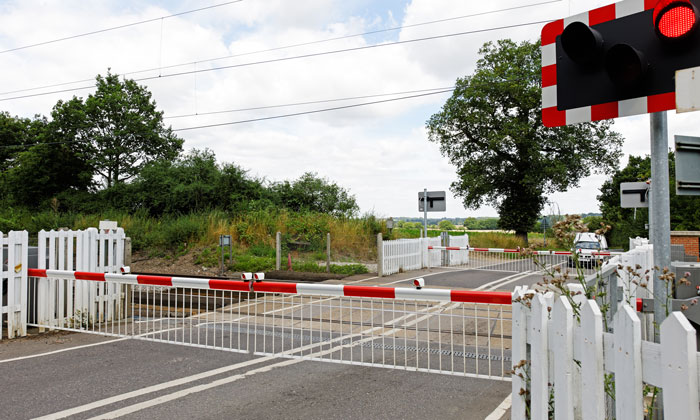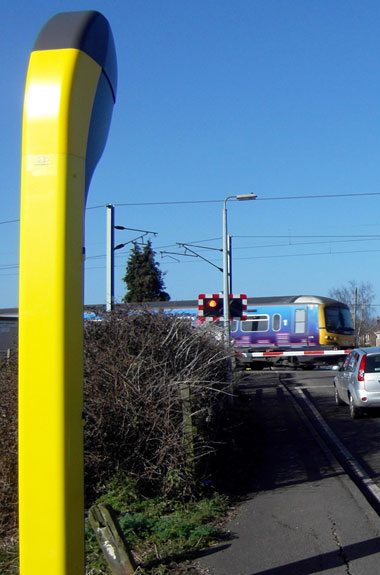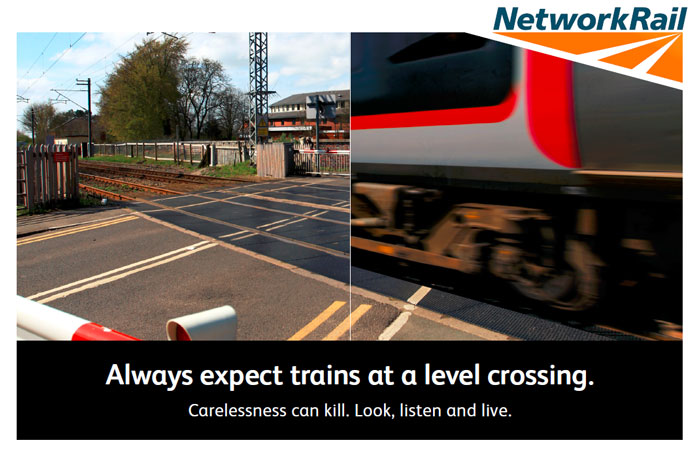Network Rail: Improving level crossing safety with a multi-faceted approach
Posted: 5 June 2018 | Robert Wainwright | 1 comment
Great Britain has one of the best level crossing safety records in Europe. This is a commendable position given that the rail network in Great Britain is one of the most intensively used in the world. Robert Wainwright, Head of Level Crossings, Network Rail gives an insight on how this has been achieved.


There are approximately 5,800 level crossings currently in situ across the UK and these numbers continue to fall each year thanks to Network Rail’s continued focus on level crossing safety improvement.
With £200 million worth of investment to date, level crossing safety still remains one of Network Rail’s key priorities moving forward. The investment has so far generated 1,100 level crossing closures and countless safety enhancements across the network. However, Great Britain’s safety record isn’t solely due to the closure and enhancement programme.
Network Rail has, over the last 10 years, focused on a multi-faceted approach to improving level crossing safety. It has overseen the introduction of level crossing managers – dedicated safety professionals who apply risk management principles every day to safeguard passenger and public safety – and introduced a number of technologies that are aimed at changing user behaviour at level crossings.
Changing behaviour at level crossings through technology
Deliberate misuse and human error remain a worry at both the passive and automatic level crossings across the UK. Therefore, Network Rail continued to invest in technology that could aid user decision making at passive crossings, with the use of supplementary audible warning devices and overlay miniature stop light solutions. Also, in partnership with the British Transport Police, Network Rail introduced the mobile safety vehicle in 2011, with the last vehicle rolling out in January 2014, as an overt enforcement vehicle which looks to change behaviour through its presence at the level crossing and through following enforcement with re-education. Whilst successful in the location it is positioned, it is just that, successful when present. Network Rail therefore had to look for a low-cost solution for fixed enforcement cameras that could be fitted at more level crossings. In the summer of 2015, Network Rail successfully trialled the use of red light safety equipment (RLSE), otherwise known as red light enforcement cameras, and are now looking to increase the number deployed on the network.


Three suppliers have now gained home office type approval (HOTA) for their products which allows the information each camera captures and produces to be used as evidence. RLSE has been proven to reduce the risk of deliberate misuse at level crossings on average by 59 per cent.
Drivers caught misusing a crossing are offered two options:
- Potential prosecution leading to a fine and points on their license
- Undertake the Drivetech Driver Retraining Course.
Behaviour change has become a reality through the use of re-education and training, with the interactive course based around four key principles:
- Driver behaviour
- Personal responsibility
- Hazard perception
- Improving driving skills.
Enforcement allows Network Rail to proactively try to change user behaviour through the threat of being caught and the course enables classroom delivered information to re-educate people on the dangers of level crossings; pushing for behaviour changes.
Whilst the work completed so far can be said to be a key contributor in the reduction of vehicle accidents, the same level of success has not been witnessed in the reduction of pedestrian incidents. Network Rail are continually looking for avenues to address this imbalance.
Raising awareness, changing perception
Running parallel alongside the enforcement procedures are level crossing safety campaigns. Over the years Network Rail has launched a plethora of campaigns focused on highlighting the risk of level crossings to both drivers and pedestrians. In partnership with industry colleagues, they participate in community engagement activities such as country fairs, village fetes and ‘Rescue Days’ which through live demonstrations highlight the consequences of an accident at a level crossing and how an accident is handled.
#BossingtheCrossing
May 2018 saw the launch of Network Rail’s new pedestrian campaign – a 13-week long campaign designed to highlight and bring to the fore the dangers of level crossings.
A series of films, resource packs for schools and extensive social media content have been launched to reach people in high risk areas and target pedestrians groups who, from research, need to hear the message most. This includes young people aged 12-25, parents with young children, cyclists, horse riders, dog walkers and people reduced mobility.
The campaign highlights the stark contrast of a level crossing – quiet and calm one moment, to loud and dangerous a split second later. It also uses geo-targeting, to communicate with the right people at the right time with the right safety message.


The overarching campaign message is ‘Look, listen, live’ and has 10 lead messages:
- Always expect trains at a level crossing
- Complacency kills. Be alert at level crossings
- Lives can change in a split second
- Think safety at level crossings
- Phones kill at level crossings. Don’t be distracted
- Nothing is more important than safety at a level crossing
- Make it your choice to cross safely at a level crossing
- Just like a road. Stop, look, listen. Teach your children to cross safely at level crossings
- Cycle safely at level crossings. Look, listen and live
- Choose to look. Choose to live.
Biography


Robert has been responsible for the movement to leading indicators to measure performance for train accident risk reduction and the creation of the prioritisation methodology for Network Rail’s national safety improvement projects.









Despite campaigns and considerable public monies to convince the public to stay alert at LC; it is worrying that some (how many & where are they?) LC control circuits permit traffic/re-opening of the LC while it is still occupied by a train. No ‘proving’ of train clearance to assist the public. It follows that collisions will occur – Stainforth Road LC Collision Report 08/2018.
Has the design of individual LC control circuitry been missed out of LC risk assessments? Perhaps the NR LC strategy needs to give stronger consideration to local control circuitry; in order to ensure that car drivers aren’t invited to drive through a LC, only to find a train in there way.